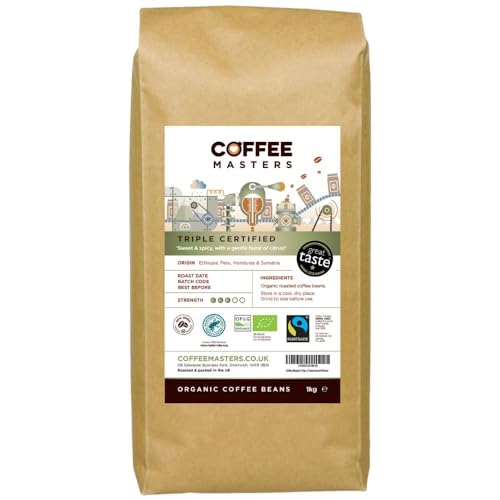Which Coffee Beans Are the Best?
When it comes to finding the perfect cup of coffee, the kind of beans you choose make the difference. Each type offers a unique taste that pairs well with a variety of drinks and food recipes.
Panama leads the pack with their rare Geisha beans which score well in cupping tests and are priced high at auction. But Ethiopia and Yirgacheffe beans, particularly, is close behind.
1. coffeebeans from Panama
If you're looking for the top coffee beans available Look no further than Geisha beans from Panama. Geisha beans are highly sought-after due to their unique aroma and flavor. These rare beans are grown at high altitudes and undergo a special method of processing which gives them their distinctive flavors. The result is a cup with a smooth, rich flavor.
Geisha coffee is native to Ethiopia but was introduced in Panama for the first time in 1963. Geisha coffee is known for its excellent taste and flavor. Geisha beans are also expensive due to the labor required to grow them. Geisha coffee plants are more difficult to grow because they require higher elevations and special climate conditions.
Geisha beans should also be handled with care since they are delicate. They must be sorted carefully and carefully prepared for roasting. They may turn bitter or acidic if not prepared properly.
The beans are cultivated at the Janson Coffee Farm, which is located in Volcan, Panama. The farm is committed to protecting the environment, and specializes in high-quality production. They make use of solar panels to generate energy and recycle waste water and materials, and utilize enzyme microbes for soil improvement. They also plant trees and make use of recycled water to wash. Their coffee is Washed Geisha, which was awarded the highest score in the Panama Coffee Competition.
2. Ethiopian Coffee
Ethiopia is a huge coffee producer with a long tradition of producing some of the best coffees. They rank as the 5th largest coffee producer in the world. their beans are highly sought-after for their unique fruity and floral flavors. Contrary to other coffees, Ethiopians taste their best when they are roast to a medium or even a light roast. This lets the floral notes be preserved while highlighting the citrus and fruity flavors.
While Sidamo beans are renowned for their sour acidity and citric acidity, coffees from other regions like Yirgacheffe and Harar are also thought to be some of the finest in the world. Harar is one of the most popular and oldest varieties of Ethiopian coffee and it comes with distinctive mocha and wine flavor profile. Coffees from the Guji zone are also recognized for their distinct terroir and complex flavors.
Another type of coffee that comes from Ethiopia is called natural process. It is made using dry-processing instead of wet-processing. Wet-processing involves the washing of coffee beans, which removes some of its fruity and sweet flavors. Until recently, natural process coffees from Ethiopia were less popular than their washed counterparts. They were frequently utilized to brighten blends, rather than being sold as a single-origin product on the market for specialty. However, recent technological advances have made it possible to get more natural Ethiopians.
3. Brazilian Coffee
Brazilian Coffee is a rich blend of different types of beans. It is known to have a low acidity. It has a sweet flavor with hints of cocoa. The flavor can differ based on the state and region in which it is produced. It is also renowned for its citrus and nutty notes. It is a great option for those who prefer medium-bodied coffee.
Brazil is the largest producer and exporter of coffee in the world. The country produces more than 30% of the world's coffee beans. It is a significant agricultural industry and Brazil's economy is heavily dependent on it. Brazil has a climate perfect for growing coffee, and fourteen major areas for coffee production.
Catuai beans, Mundo Novo beans, Obata beans, and Icatu are the primary beans used to make Brazilian coffee. These are all varieties of Arabica. There are also a lot of hybrids which include Robusta. Robusta is the coffee bean that was first discovered in Sub-Saharan Africa. It's not as delicious and aromatic as Arabica but it's much easier to grow.

It is important to remember that slavery is a problem in the coffee industry. Slaves in Brazil are often forced to endure lengthy and exhausting work days and are often not provided with adequate housing. The government has taken measures to address this issue by implementing programs to help coffee growers pay their debts.
4. Indonesian Coffee
The top coffee beans of Indonesia are renowned for their dark, powerful flavor and earthy taste. The volcanic ash in the soil gives them a earthy taste and a robust body. They are ideal to mix with beans from Central America or East Africa that have higher acidity. They also react well to roasting that is darker. Indonesian coffees are characterized by a complex and rustic taste profile and typically have notes of tobacco, leather wood, ripe berries, and spice.
Java and Sumatra are the two biggest coffee producing areas in Indonesia but some coffee is also cultivated on Sulawesi and Bali. A lot of farms in these regions employ a wet hulling method. This differs from the washed method utilized in the majority of the world. The coffee cherries are de-pulped followed by washing and drying. The hulling process reduces the amount of water present in the coffee that can reduce the effect of rain on the final product.
One of the most well-known and high-quality varieties of Indonesian coffee is Mandheling, which comes from the Toraja region. It is a full bodied coffee with hints of candied fruits and a smoky taste of chocolate. Other types of coffee that come from this region include Gayo and Lintong. They are usually wet hulled and have a full-bodied, smokey flavor.
